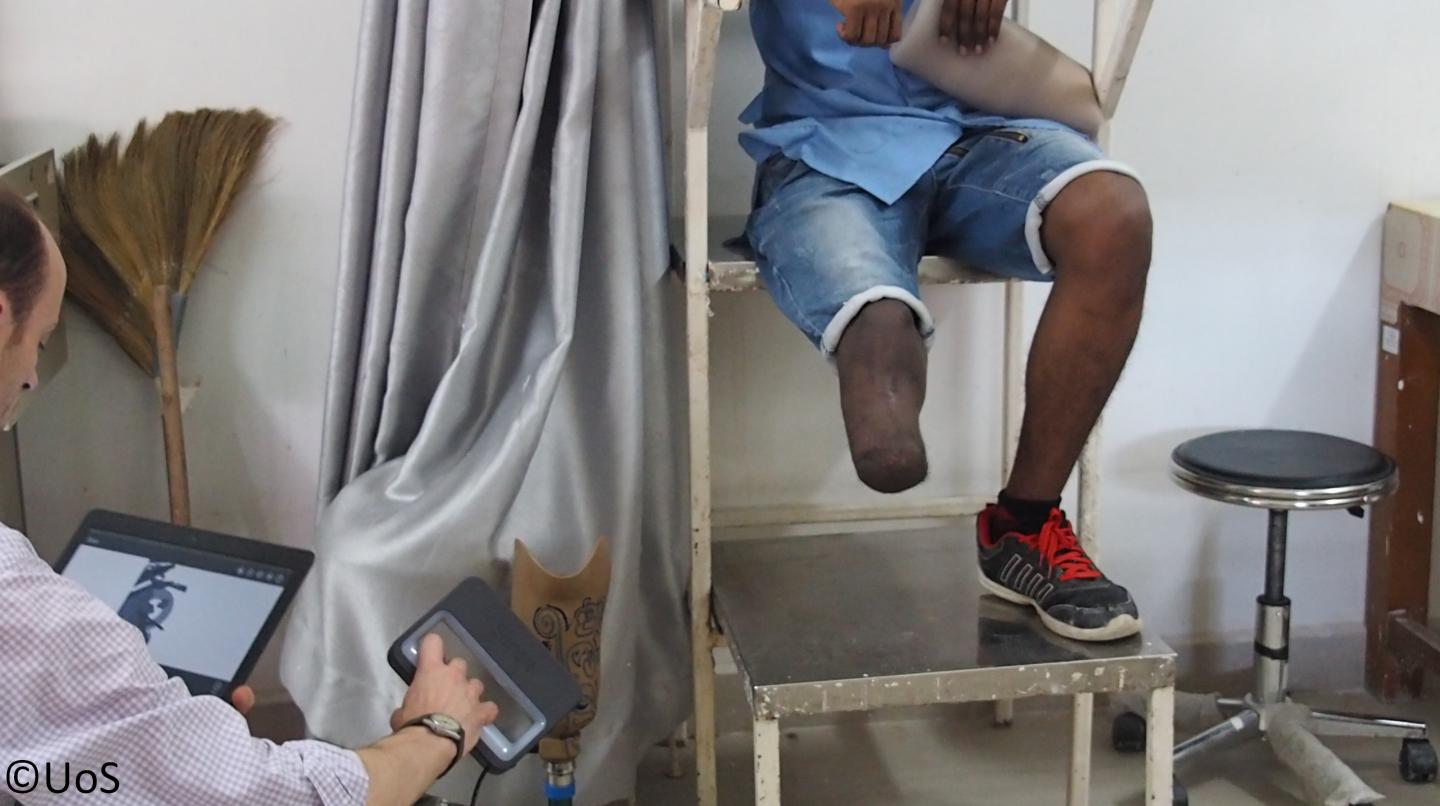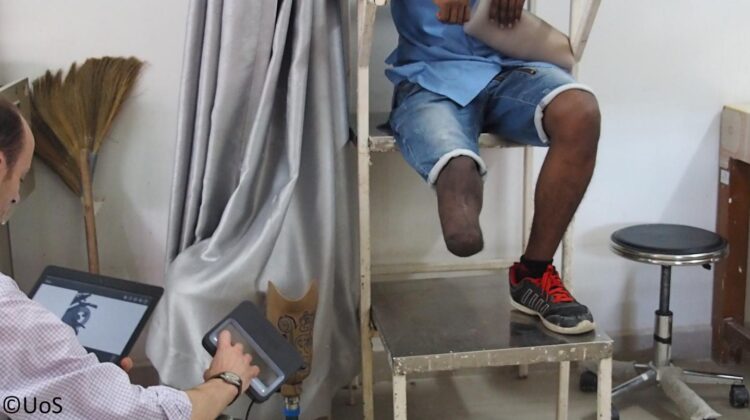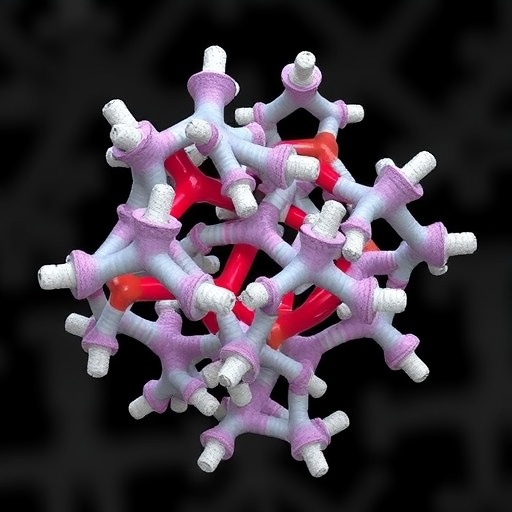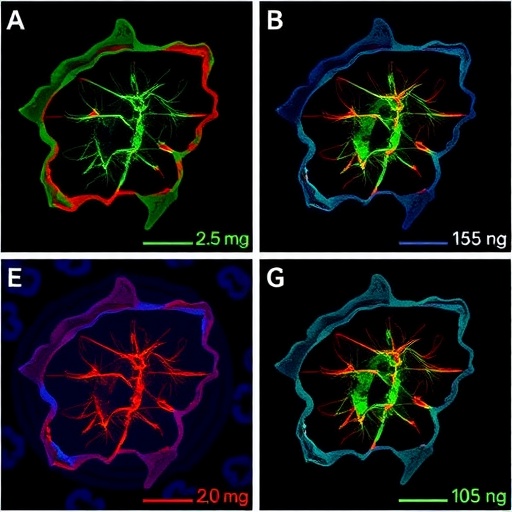
Credit: University of Southampton
Cutting-edge 3D scanners have been put to the test by researchers from the University of Southampton and partners Exceed Worldwide to help increase the quality and quantity of prosthetics services around the world.
The study, carried out within the People Powered Prosthetics research group compared plaster-casts and 3D scans for prosthetic limb users in Cambodia to establish the suitability of different digital technologies.
The results, published in the Journal of Prosthetics and Orthotics, will help people to choose the right scanner for different uses – including new prosthesis design, replicating worn-out prosthesis, or limb shape monitoring – and assess whether affordable scanners in lower-income countries are fit for purpose.
A prosthetic limb is attached to the body using a bespoke socket that fits over the patient’s residual limb (or stump). Well-fitting prosthetic sockets are crucial for the wearer’s comfort and enable people to be independent and carry out functional activities like standing, walking, working and using transport.
Typically, these sockets are produced by experts using a hands-on plaster casting method. This gets excellent results but is often iterative, which comes at a cost and some inconvenience to patients.
Computer aided design and manufacturing (CAD/CAM) methods involve 3D scanning the person’s residual limb, designing the socket in software and using robotic carvers in manufacturing. The scans give a true indication of limb shape but variation might arise because limbs change as people’s muscles twitch and relax.
Dr Alex Dickinson, lead author from the Bioengineering Science Research Group, says: “Before this paper, evidence for the reliability of 3D scanners for prosthetic limb design was produced using plaster models and mannequins that don’t twitch, or have trouble balancing. We are generating and sharing first-of-kind reliability data by scanning a group of prosthesis users’ limbs directly, and comparing it to important reference data (the reliability of expert clinicians using plaster casting) to benchmark scanner accuracy and effectiveness.”
For each participant, two plaster casts were made by a prosthetist and their residual limbs were scanned after each cast.
The research found that some low-cost scanners could capture limb shape with similar repeatability (the difference between their two repeated measurements) to the expert prosthetist using their hands and plaster, but that other devices gave considerably different results between their two measurements compared to the clinician.
The Southampton researchers collaborated on the study with expert prosthetists at Exceed Worldwide, a charity that provides prosthetic limbs to thousands of people in Cambodia and across South East Asia.
Dr Dickinson adds: “As with many emerging technologies, there’s a risk that people could choose very high accuracy scanners that might limit the benefit of the approach to wealthy clinics; on the other hand, people could choose the new, very low-cost scanners which are developing alongside 3D printing, which might not be accurate enough at capturing anatomic shape for prosthetic limb design.
“This new data should help people choose the right scanner for the right job. We suggest that prosthetics design and measurement technologies should be benchmarked against the expert clinician and used to support them, never to replace their skill and training. By choosing appropriate technologies we can help make sure prosthetics services are accessible to as many people as possible, more sustainable, and with no compromise on quality.”
###
Media Contact
Steve Bates
[email protected]
Related Journal Article
http://dx.





